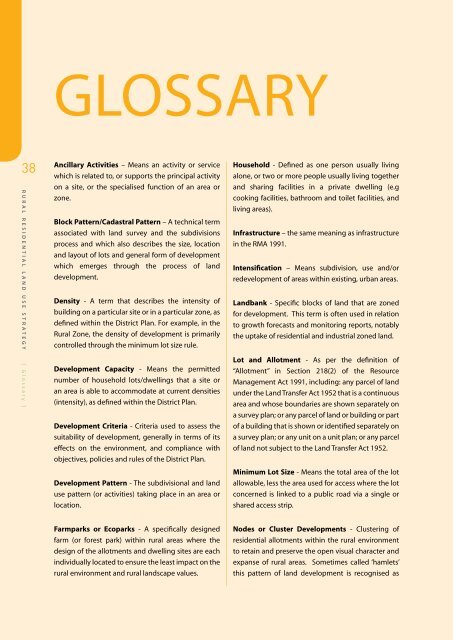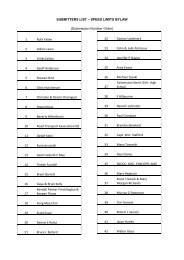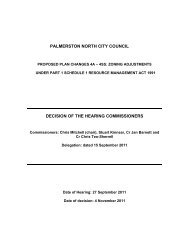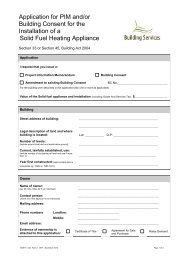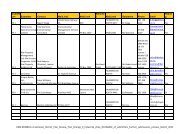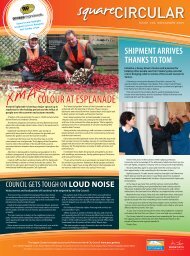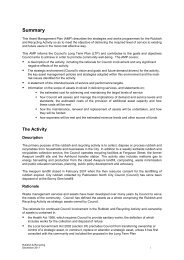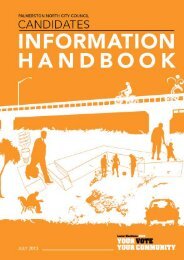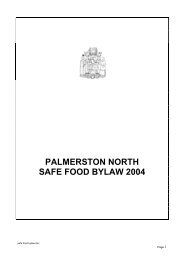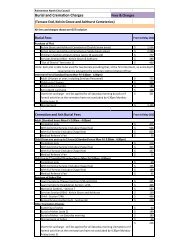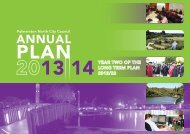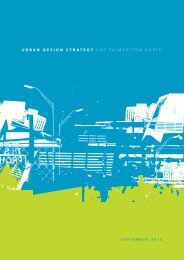Rural Residential Land Use Strategy - Palmerston North City Council
Rural Residential Land Use Strategy - Palmerston North City Council
Rural Residential Land Use Strategy - Palmerston North City Council
You also want an ePaper? Increase the reach of your titles
YUMPU automatically turns print PDFs into web optimized ePapers that Google loves.
GLOSSARY<br />
38<br />
RURAL RESIDENTIAL LAND USE STRATEGY [ Glossary ]<br />
Ancillary Activities – Means an activity or service<br />
which is related to, or supports the principal activity<br />
on a site, or the specialised function of an area or<br />
zone.<br />
Block Pattern/Cadastral Pattern – A technical term<br />
associated with land survey and the subdivisions<br />
process and which also describes the size, location<br />
and layout of lots and general form of development<br />
which emerges through the process of land<br />
development.<br />
Density - A term that describes the intensity of<br />
building on a particular site or in a particular zone, as<br />
defined within the District Plan. For example, in the<br />
<strong>Rural</strong> Zone, the density of development is primarily<br />
controlled through the minimum lot size rule.<br />
Development Capacity - Means the permitted<br />
number of household lots/dwellings that a site or<br />
an area is able to accommodate at current densities<br />
(intensity), as defined within the District Plan.<br />
Development Criteria - Criteria used to assess the<br />
suitability of development, generally in terms of its<br />
effects on the environment, and compliance with<br />
objectives, policies and rules of the District Plan.<br />
Development Pattern - The subdivisional and land<br />
use pattern (or activities) taking place in an area or<br />
location.<br />
Household - Defined as one person usually living<br />
alone, or two or more people usually living together<br />
and sharing facilities in a private dwelling (e.g<br />
cooking facilities, bathroom and toilet facilities, and<br />
living areas).<br />
Infrastructure – the same meaning as infrastructure<br />
in the RMA 1991.<br />
Intensification – Means subdivision, use and/or<br />
redevelopment of areas within existing, urban areas.<br />
<strong>Land</strong>bank - Specific blocks of land that are zoned<br />
for development. This term is often used in relation<br />
to growth forecasts and monitoring reports, notably<br />
the uptake of residential and industrial zoned land.<br />
Lot and Allotment - As per the definition of<br />
“Allotment” in Section 218(2) of the Resource<br />
Management Act 1991, including: any parcel of land<br />
under the <strong>Land</strong> Transfer Act 1952 that is a continuous<br />
area and whose boundaries are shown separately on<br />
a survey plan; or any parcel of land or building or part<br />
of a building that is shown or identified separately on<br />
a survey plan; or any unit on a unit plan; or any parcel<br />
of land not subject to the <strong>Land</strong> Transfer Act 1952.<br />
Minimum Lot Size - Means the total area of the lot<br />
allowable, less the area used for access where the lot<br />
concerned is linked to a public road via a single or<br />
shared access strip.<br />
Farmparks or Ecoparks - A specifically designed<br />
farm (or forest park) within rural areas where the<br />
design of the allotments and dwelling sites are each<br />
individually located to ensure the least impact on the<br />
rural environment and rural landscape values.<br />
Nodes or Cluster Developments - Clustering of<br />
residential allotments within the rural environment<br />
to retain and preserve the open visual character and<br />
expanse of rural areas. Sometimes called ‘hamlets’<br />
this pattern of land development is recognised as


